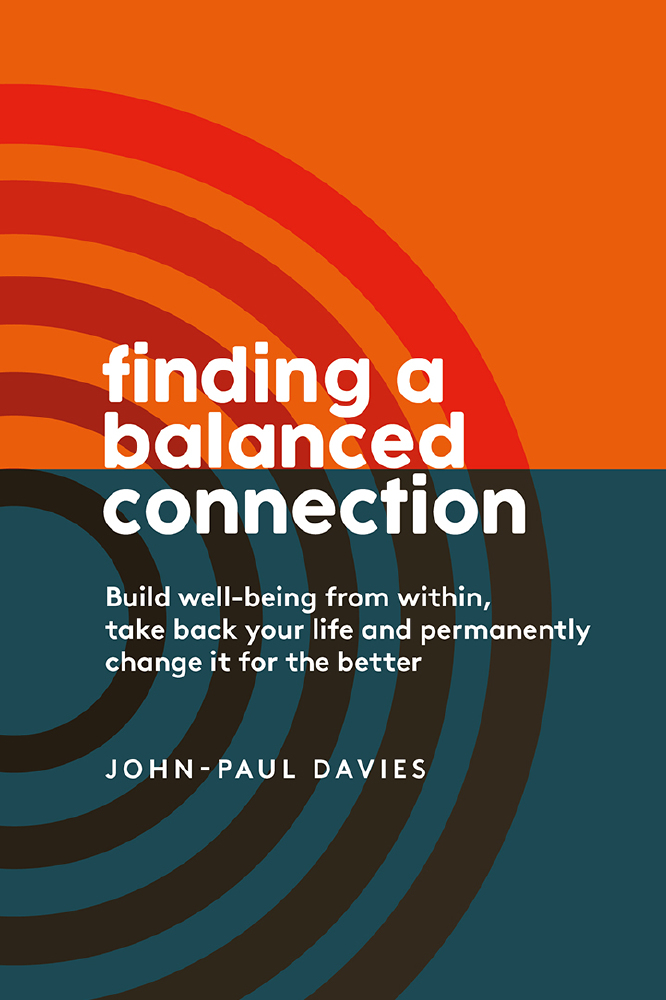by psychotherapist, counsellor and author of Finding A Balanced Connection, John-Paul Davies

Finding a Balanced Connection
Internally, you might see boundaries as the thinking, feeling and behavioural lines you draw to make sure you’re taking care of yourself. Externally, they’re the (similarly invisible) line you draw at the point where you end and another person begins – your guidelines on how it’s okay for others to behave towards you and how you’ll behave towards them. Healthy boundaries, and your ability to maintain them, to open and close them as you need to, are key to maintaining the good relationships with both self and others that are the basis of your well-being. Firm enough to keep you safe and open enough to be able to reach out to others as you need to.
The boundaries you live with now will come from various sources including your beliefs, values, social environment and childhood and, as such, they’ll often have been set by other people. It’s therefore really important to make sure they actually work for you.
So how do you set boundaries?
Always hold in mind why - much of the distress we experience is, I believe, due to us not feeling as safe psychologically as we might. Boundaries help us to feel safe, thereby taking care of a primary need.
Make an ‘inventory’ of your existing boundaries - as well as the usual ones of keeping time, confidences and commitments, physical touch and when to say no, others to consider might include:
• when to take a risk,
• when to reach out for help and support and when to try to sort it out on your own; and
• when to stand apart from a group if you’re uncomfortable with what’s happening
As and when you recognise any boundaries need changing, then start to consider alternatives. We don’t want you just to be identifying problems here, try to move to what might happen instead.
Maintain boundaries by keeping calm – you could see assertiveness as being in control of yourself, rather than any ability to control others. If you keep calm, you preserve access to memory, reasoned thinking, perspective and empathy; this makes it much more likely that the other person will do the same. There are many ways to keep calm, i.e., keep your nervous system in balance, including mindfulness and physical exercise.
Using imagery and visualisations might also help here – some people like the idea of ‘winding the window up’ between themselves and others: you can still see, hear and relate to the other person, but there’s something clear in between maintaining your separateness.
Communication – to maintain boundaries in relationships, try to be aware of how you communicate boundaries and the words you use. Where possible plan in advance what you want to say. Generally, tend towards using “I” rather than “you” when expressing need/wants.
Flexibility – always hold in mind that this is a journey, sometimes of trial and error. Some boundaries may need to be strengthened, others lessened, and this can change over time too, as your needs and wants change.
Be patient – as is often the case with looking at wellbeing issues, there’s no rush with this, unless of course your current situation really threatens your psychological and/or physical safety. Always be patient and kind to yourself as you work through it.

